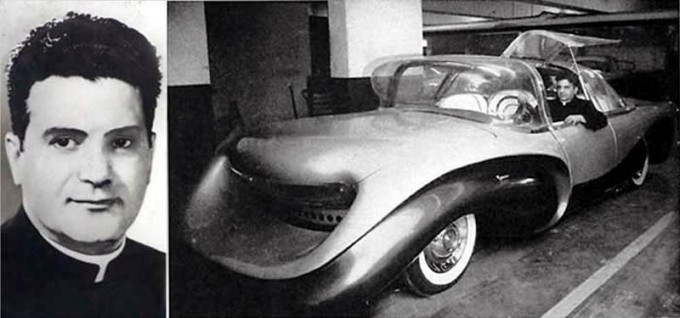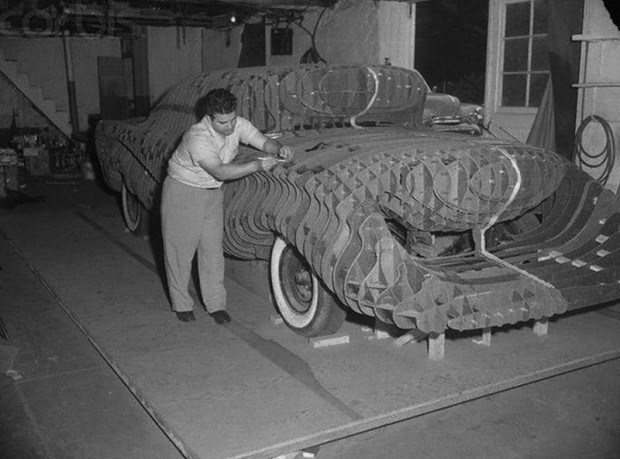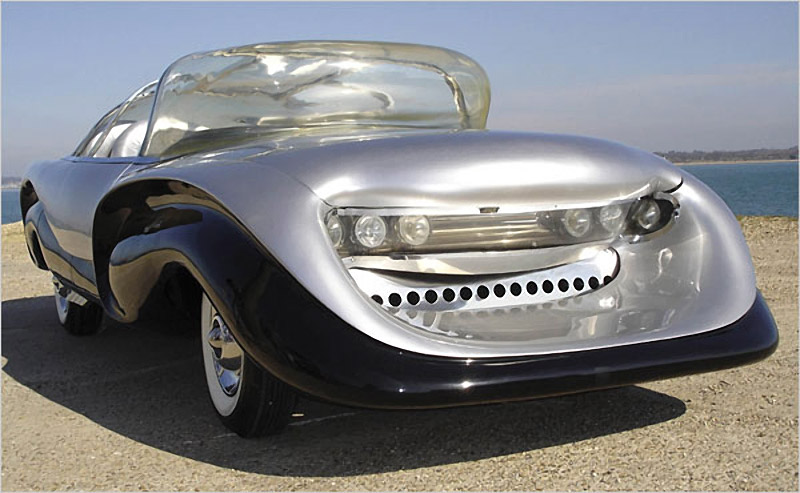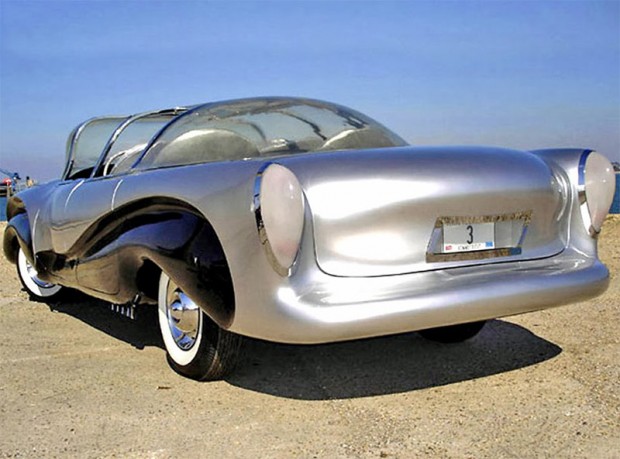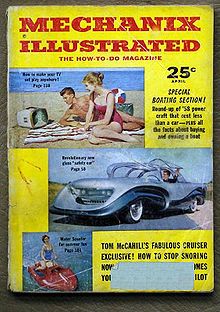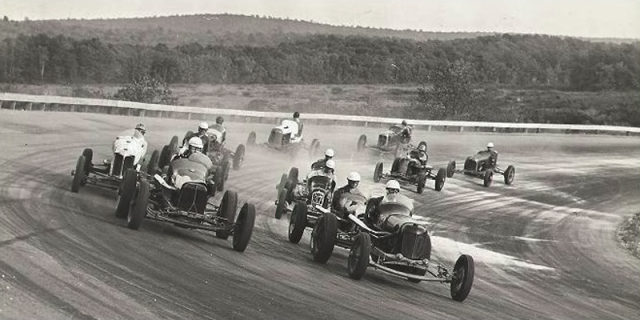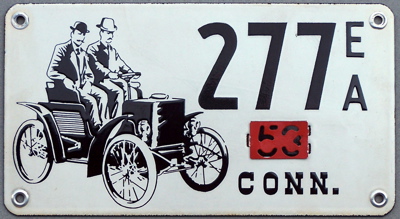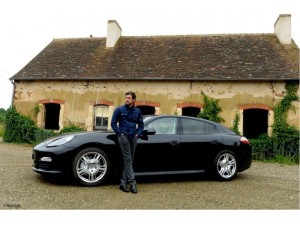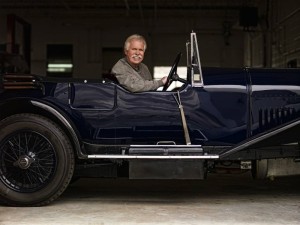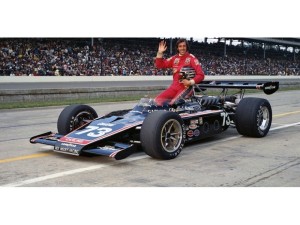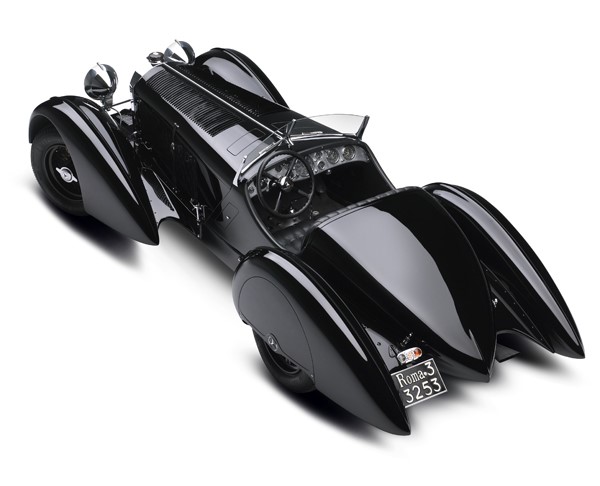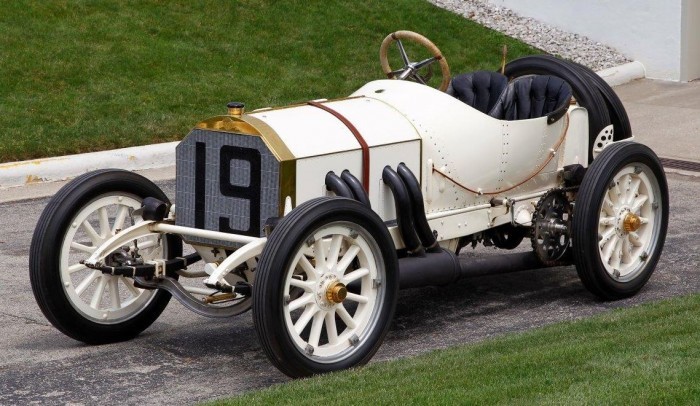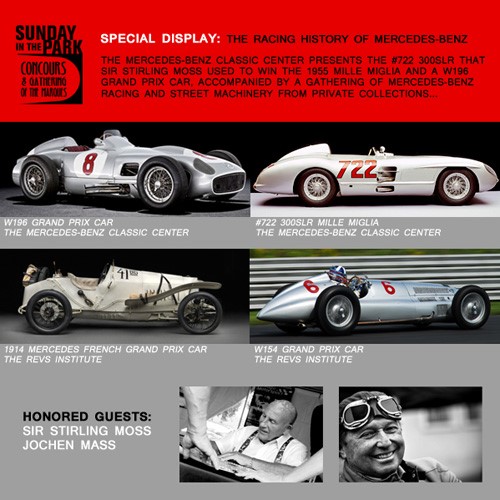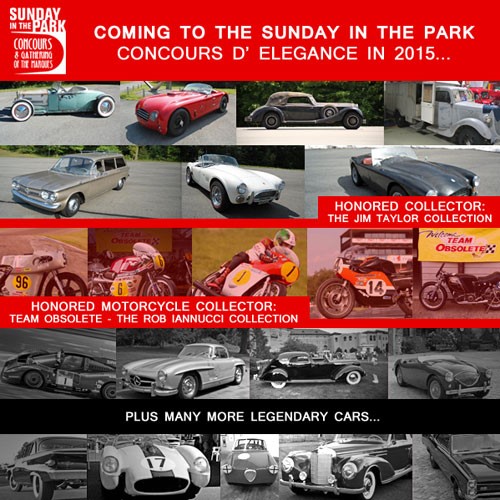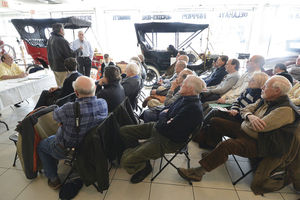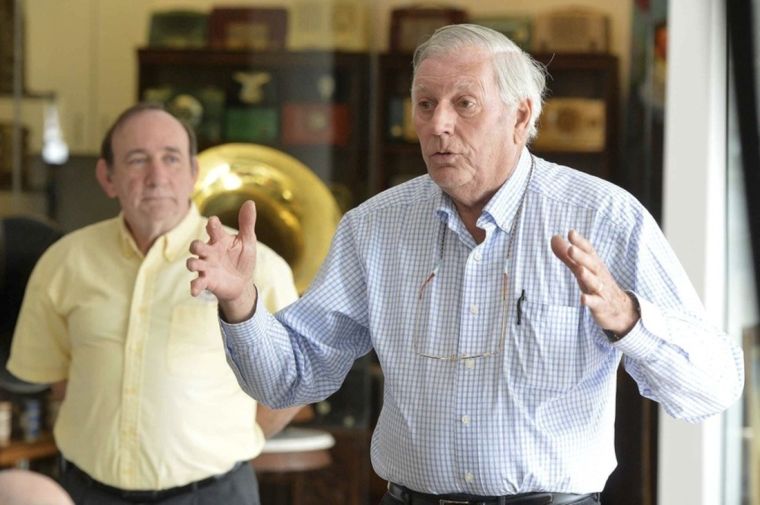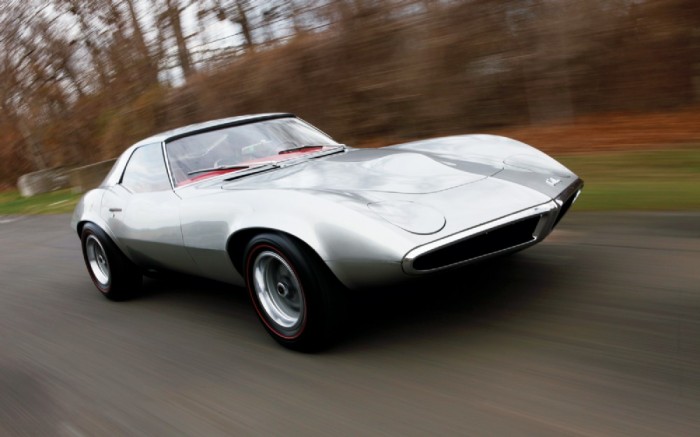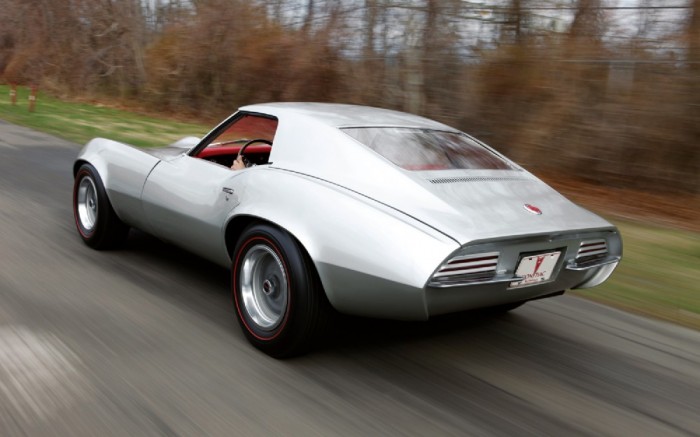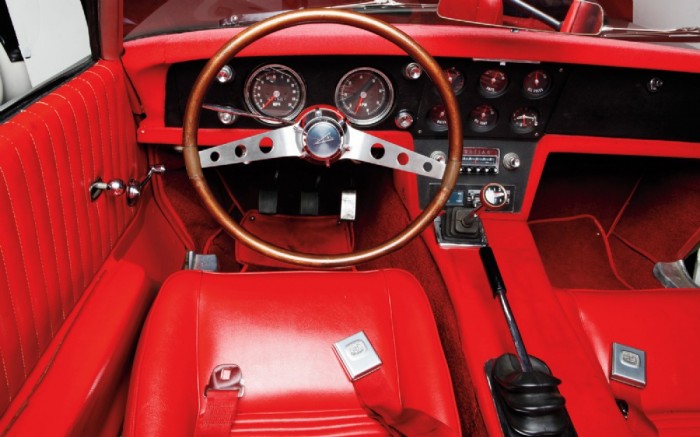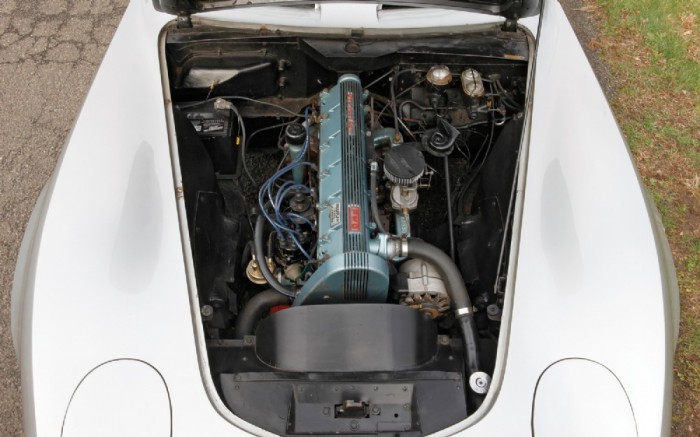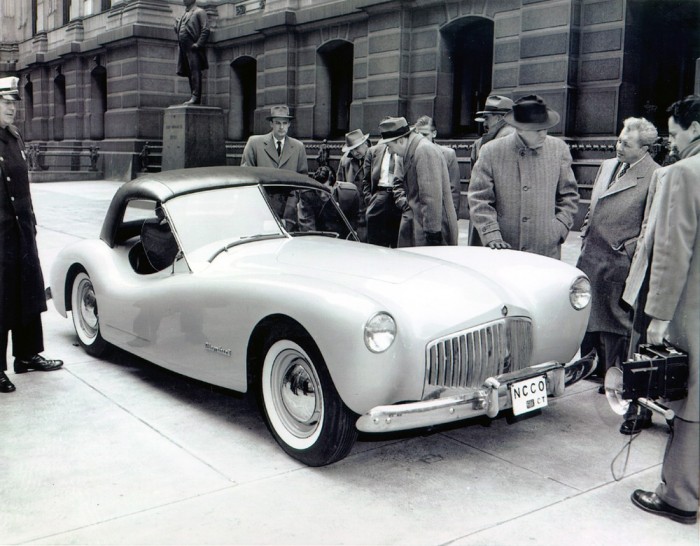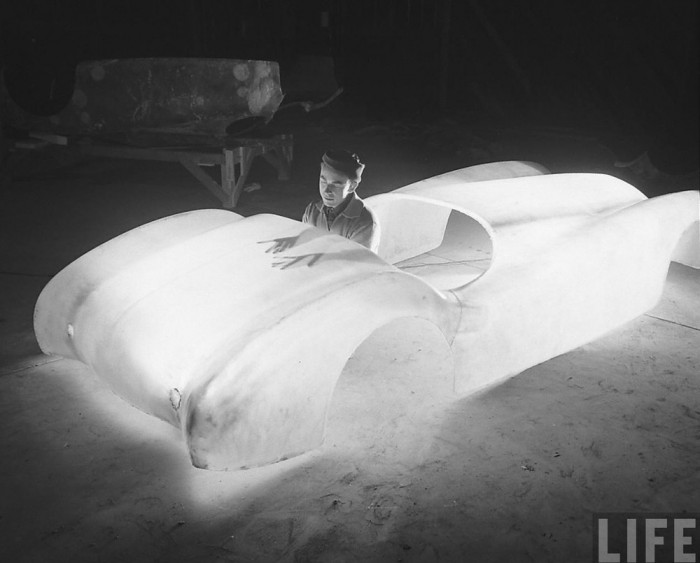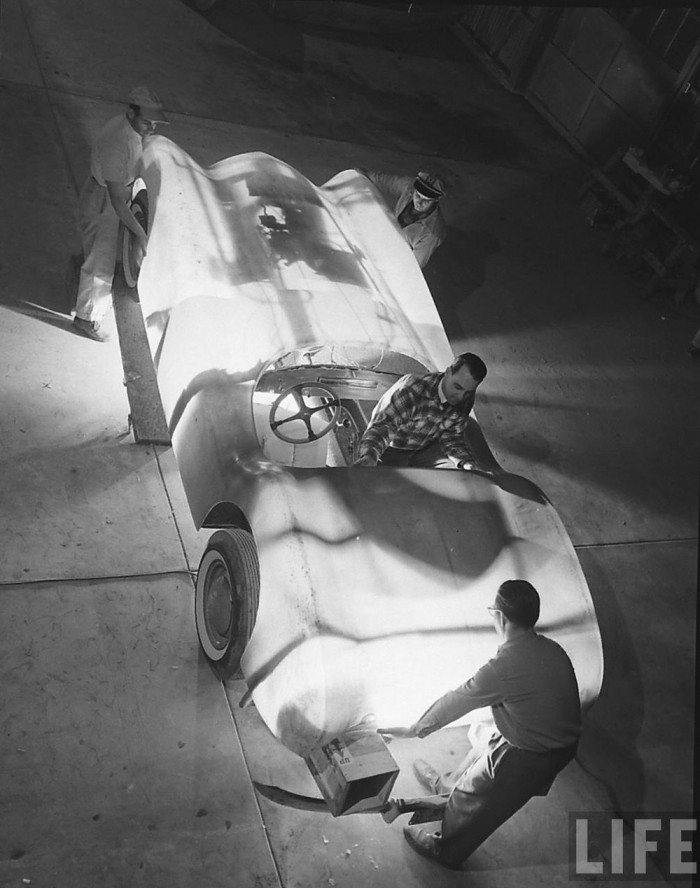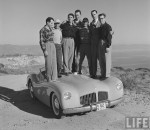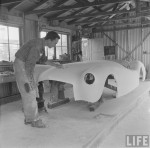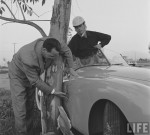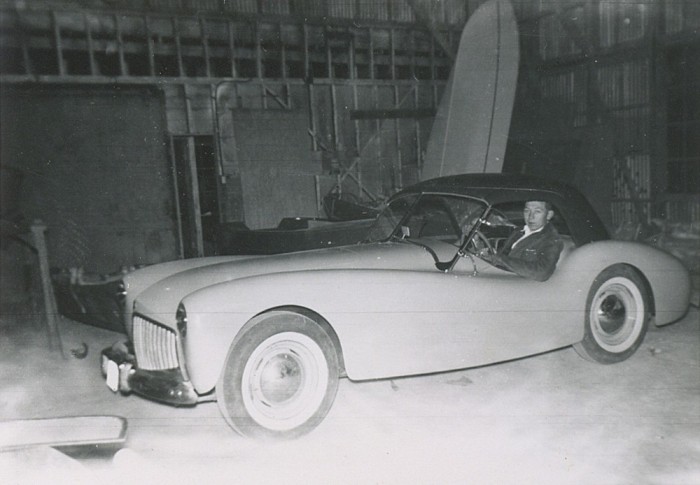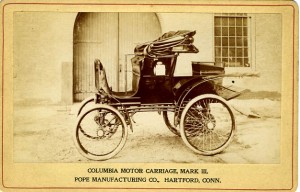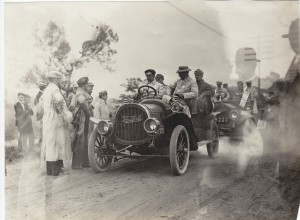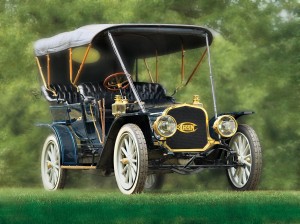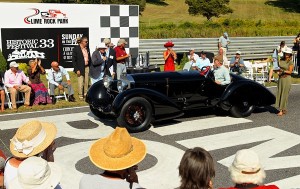
With Honored Guests Sir Stirling Moss and Jochen Mass looking on (left), the Ralph Lauren-owned 1930 “Count Trossi” Mercedes SSK is awarded Best of Show honors (Photo by Casey Keil/Lime Rock Park)
Lakeville, Conn. – At Lime Rock Park’s Historic Festival 33, its Sunday in the Park Concours d’Elegance saw 264 entrants in 29 classes vying for Best of Show honors. The not-surprising but certainly deserving 1930 Mercedes-Benz SSK “Count Trossi” was judged the winner. The custom-bodied SSK is owned by Ralph Lauren.
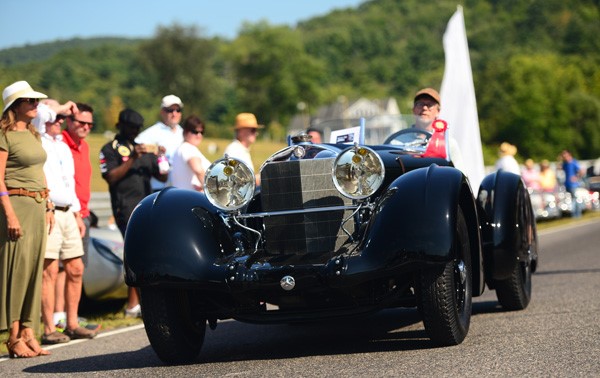
Photo by Greg Clark/Lime Rock Park
Originally built with a competition “spyder” body by Carrozzeria Touring, between 1931 and 1933, this SSK was campaigned in the Mille Miglia, various hill climbs and other local events by original owner Trossi and following owners. The Italian count re-purchased the car and commissioned new bodywork in 1934. Willy White, an unknown American coachbuilder, is presumed to be the designer of the spectacular coachwork but that’s never been confirmed.
“The Trossi SSK is truly a work of art,” said Festival organizer Murray Smith. “This car is so rarely in public, I can’t thank Ralph enough for entering it in our concours for everyone to enjoy.” The Lauren SSK previously won Best of Show at the 1993 Pebble Beach concours and Italy’s Villa d’Este concours in 2007.
Appropriately, the SSK was shown alongside five other spectacularly important Mercedes competition cars; two from the Mercedes Classic Center in Germany (the 1955 Mercedes-Benz 300 SLR “722” and a 1955 Mercedes-Benz W196 Grand Prix Silver Arrow), two from The Revs Institute of Naples, Fla. (1939 Mercedes-Benz W154 and 1914 Mercedes Grand Prix car), and one from the Indianapolis Motor Speedway Hall of Fame Museum (1908 Mercedes Brooklands).
Class Winners, 2015 Sunday in the Park Concours d’Elegance at Historic Festival 33
Group A, Our Distinguished Seniors
Class A1, “And So We Begin,” special class for the machines that started it all, pre-1915
1911 Packard 30 7-Passenger Touring, Michael DeAngelis, Stamford, Conn.
Class A2, “The World’s First Wheels,” basic transportation 1915 to 1939, open and closed cars
1932 Plymouth PB Sport Roadster, Kevin Biebel, Stamford, Conn.
Class A3, “Gatsby’s Delights pres. by Castle Cadillacs,” luxury and speed; coachbuilt and special cars from an elegant era, pre-WWII
1938 Lincoln Model K LeBaron Convertible, John Winslett & Sheri St. Germain, Bristol, R.I.
Group B, Practical Machines for Practical Purposes
Class B1, “Off to Work,” post-War transportation machinery; those workhorses we depended on daily
1941 Tatra T87 Diplomat, Barney Hallingby, Sharon, Conn.
Class B2, “Carry Your Weight,” trucks and commercial vehicles up to 1975; machines that earn their keep
1975 Land Rover Series III 3-door truck, Thomas & Kristin Zarrella, Gloucester, Mass.
Group C, Sports and Performance Machines on Display and on Track
Class C1, “Risky and Racy,” racing, competitive specials and speed-record machines
1965 Alfa Romeo GTA, Jon Goodman, Philadelphia, Pa.
Class C2, “The Rallyist’s Revenge,” rallying function in a variety of forms
1985 Audi Quattro, Ed Torres, Norwalk, Conn.
Class C3, “Speed and Agility,” early sports cars to 1954
1952 MG TD Roadster, Hal Kramer, Pittsfield, Mass.
Class C4, “Dashing Between the Drops,” mid-sports car era roadsters, 1955 to 1961
1960 MGA, Phil Brown, Bloomfield, Conn.
Class C5, “Racers are Rewarded,” race on Saturday, show on Sunday (Saturday’s winners on exhibit)
1959 Volvo PV-544, Ronald Polimeni, Capon Bridge, W.Va.
Class C6, “Shiny Side Up,” Sports cars, 1962 to 1967
1962 Austin-Healey 3000 MK II, Donald E. Schneider, Lititz, Pa.
Class C7, “For the Fun of the Drive,” sports cars, 1968 to 1975
1970 Lotus Elan S4 SE/Sprint, David Porter, Darien, Conn.
Class C8, “Speed, Sport and Spirit,” sports cars, 1976 to 1990
1983 Lancia Beta Zagato, Jane & Jerome Roth, W. Cornwall, Conn.
Group D, Grand Touring Greatness
Class D1, “Style, Comfort and Pace,” GT cars, 1955 to 1961
1961 Porsche 356B T5, Mark Reich, North Andover, Mass.
Class D2, “A Businessman’s Express,” GT cars, 1962 to 1967
1964 Chevrolet Corvette, Mike Lombardi, Watertown, Conn.
Class D3, “Speed Breeds Success,” GT cars, 1968 to 1975
1968 Lamborghini Miura, Michael Schwartz, Sharon, Conn.
Class D4, “Outrunning the Wind,” open-air GT-caliber cars, 1955 to 1980
1962 Austin-Healey 3000 BN7 MKII, Roger Hamblin, Sandwich, N.H.
Class D5, “Simply Exceptional,” super-cars and special road cars, 1975 to present
1979 Porsche 930, Bud Szurek, Hebron, Conn.
Group E, Comfort, Style and More – Luxury Transport in a Post-War World
Class E1, “Comfort and Class and Wind in the Hair,” open-air motoring elegance, 1945 to 1985
1960 Cadillac Eldorado Biarritz convertible, John E. Haverty, Pleasant Valley, N.Y.
Class E2, “In the Lap of Luxury,” exceptional luxury in coupe and sedan form, 1945 to 1959
1958 Cadillac Eldorado Seville, Frank Nicodemus, Jr., Poughkeepsie, N.Y.
Class E3, “Life at the Top in Style and Comfort,” luxurious transportation coupes and saloons, 1960 to 1985
1977 Jaguar XK6-C Coupe, Richard Sementilli, New York, N.Y.
Group S, Our Special Feature Classes
Class S1, “Mercedes-Benz: The Legacy of Excellence,” stars of the three-pointed star: track machines
1939 Mercedes-Benz W154 “Silver Arrow,” The Revs Institute, Naples, Fla.
Class S2, “Mercedes-Benz: Practical Excellence on the Road,” stars of the three-pointed star: road machines
1957 Mercedes-Benz 300SC Roadster, Old Timer Restoration/Off Bros., Harvard, Mass.
Assorted Groups, Special Interest
Class F1, “Just as we Found it,” untouched originals to 1975
1962 Mercedes-Benz 300SL Roadster, Ann M. Fagan, Briarcliff Manor, N.Y.
Class F2, “A Fresh Approach,” creative machines and “Euro rods” that fall between classing cracks, all years
1976 BMW 3.5 CSL Tribute Car, Joseph Rodriguez, Mahwah, N.J.
Class F3, “Hot Rod,” our tribute to garage-built American
greatness, all years
1956 Chevrolet Suburban, Shaun Nettleton, Washington, Conn.
Class F4, “Mercedes in Motion,” Mercedes-enthusiast passion through the years, all years
1962 Mercedes-Benz 300 D, Jeri & Mary Ann Barrett, Easton, Conn.
Class F5, “Up on Two Wheels,” the lighter side of getting going; legendary motorcycles through 1995
1937 BMW R6, Philip Richter, Ridgefield, Conn.
Class F6, “Domestic Dynamite,” reflections of a golden age of American Muscle, 1955 to 1980
1967 Pontiac GTO, Thomas & Kristin Zarrella, Gloucester, Mass.
Class F7, “Arnolts Abound!” A reunion of Arnolt-Bristols
1957 Arnolt-Bristol Deluxe Roadster, Michael Arnolt, Indianapolis, Ind.
Jochen’s Selection
1966 Jaguar XKE OTS, Thomas V.G. Brown, Norwalk, Conn.
Stirling’s Selection
1955 Mercedes-Benz 300 SLR “722,” Mercedes Classic, Stuttgart, Ger.

Sir Stirling Moss’ favorite car at Sunday in the Park! The 300 SLR he and Denis Jenkinson drove to victory in the 1955 Mille Miglia (Photo by Greg Clark/Lime Rock Park)
Posting Courtesy Lime Rock Park


